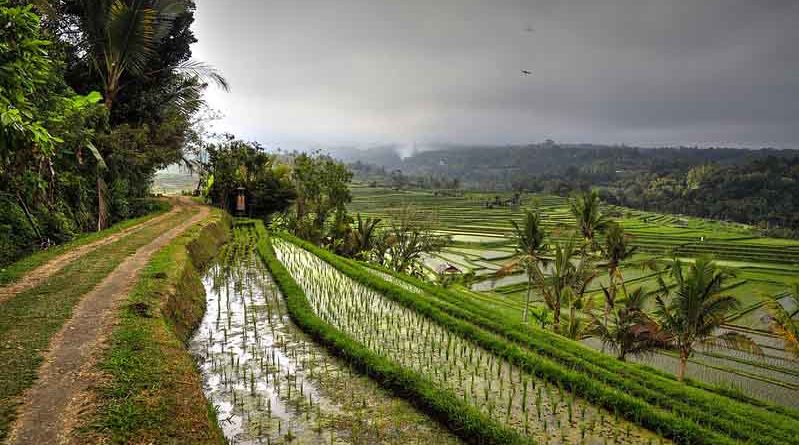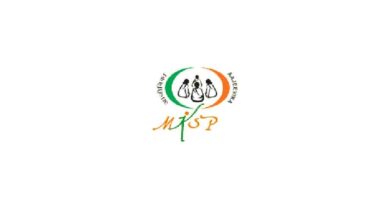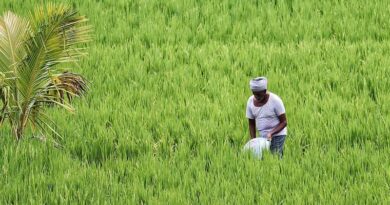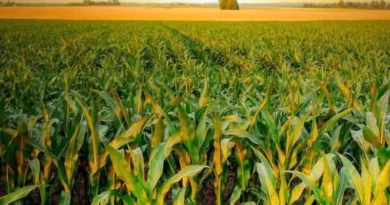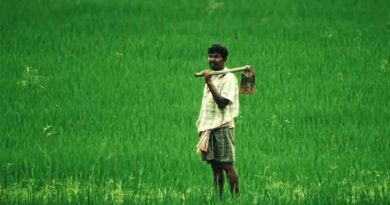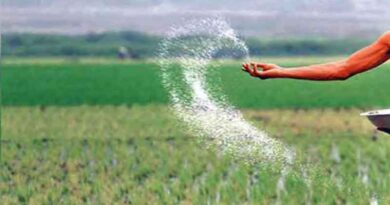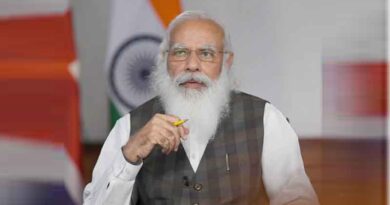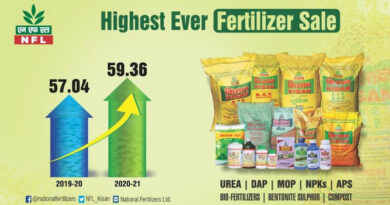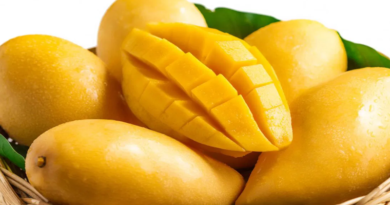Schemes, programmes, reforms and policies by Indian government to increase farmers income
19 March 2021, New Delhi: The Government has adopted several developmental programmes, schemes, reforms and policies, that focus on higher incomes for the farmers.
All these policies & programmes are being supported by higher budgetary allocations, non-budgetary financial resources by way of creating Corpus Funds like Micro Irrigation Fund and Agri-marketing Fund to strengthen eNAM and GrAMs, Market Reforms like Model APLMC (Promotion & Facilitation) Act, 2017, Establishment of 22,000 number of Gramin Agriculture Markets (GrAMs), Agri-Export Policy, The Farmers Produce Trade and Commerce (Promotion & Facilitation) Act., 2020, The Farmers (Empowerment & Protection) Agreement on Price Assurance and Farm Services Act., 2020,Amendments to Essential Commodities Act, 1955, Promotion of 10,000 FPOs and supplementary income transfers under PM-KISAN, Pradhan Mantri Fasal Bima Yojna (PMFBY), Pradhan Mantri Krishi Sinchai Yojna (PMKSY), Increase in Minimum Support Price (MSPs) for all Kharif & Rabi Crops, Har Med Par Ped, Bee-Keeping, Rashtriya Gokul Mission, Blue Revolution, Interest Subvention Scheme, Kisan Credit Card (KCC), etc.The latest major intervention includes the ‘Atma Nirbhar Bharat – Agriculture’ which includes comprehensive market reforms and creation of ‘Agricultural Infrastructure Fund (AIF)’ worth Rs. 1 lakh crores.
In the Budget Announcement 2021-22, allocation to Micro Irrigation Fund has been doubled to Rs 10,000 crore and Institutional Credit has been increased to Rs 16.50 lakh crore. A list of achievements of the Government are mentioned below:
Unprecedented enhancement in budget allocationIn the year 2013-14, the Budget allocation for Department of Agriculture was only Rs. 21933.50 crore. This has been increased by more than 5.5 times to Rs. 1,23017.57 crore in 2021-22.
Food grain production has increased from 265.05 million tonnes in 2013-14 to record 297.50 million tonnes in 2019-20 which is the highest ever food grain production as per the 2nd advance estimates for 2020-21, it is 303.34 million tonnes. This is the first time that the 300 million mark will be crossed. As per third advanced estimates, horticulture production during 2019-20 is 319.57 million MT which is the highest ever for Indian horticulture.
Fixing of MSP at one-and-a half times the cost of production –
● Government has increased the MSP for all mandated Kharif, Rabi and other commercial crops with a return of at least 50 per cent over all India weighted average cost of production from 2018-19.
● MSP for Paddy has increased to Rs. 1868 per quintal in 2020-21 from Rs. 1310 per quintal in 2013-14 marking an increase of 43%.
● MSP for Wheat increased from Rs. 1400 per quintal in 2013-14 to Rs. 1975 per quintal in 2020-21.
Increase in procurement from farmers
● MSP payment to farmers for pulses has increased by 95.93 times during the last five years (2016-17 to 2020-21) in comparison to the period from 2009-10 to 2013-14. MSP Payment of Rs 61,861 Crore has been made as against Rs 645 Crore of the previous 5 years.
● MSP payment to farmers for oilseeds and copra has increased by 10.80 times during the last five years (2016-17 to 2020-21) in comparison to the period from 2009-10 to 2013-14. MSP Payment of Rs 26627 Crore has been made as against Rs 2460 Crore of the previous 5 years.
Income support to farmers through PM KISANLaunch of PM-KISAN in 2019 -an income support scheme providing Rs. 6000 per year in 3 equal instalments. A total of Rs. 115276.77 crore has been released so far to 10.74 crore farmer families.
Pradhan Mantri Fasal Bima Yojana (PMFBY)PMFBY was launched in 2016 addressing problems of high premium rates for farmers and reduction in sum insured due to capping. In past 4 years of implementation – 23 crore farmer applicants enrolled and over 7.6 crore farmer applicants have received claims of over Rs. 90,927 crore. During this period nearly ₹17,510 crore were paid by farmers as their share of premium against which claims of nearly ₹90,000 Crore have been paid to them. Thus, for every 100 rupees of premium paid by farmers, they have received Rs. 520 as claims.
Institutional credit for agriculture sector
● Increased from Rs. 7.3 lakh crore in 2013-14 with a target to reach Rs. 16.5 lakh crore in 2021-22.
● Benefit of concessional institutional credit through KCC at 4% interest per annum has also now been extended to Animal Husbandry and Fisheries farmers for meeting theirshort term working capital needs.● A special drive has been undertaken since February 2020 to provide concessional credit to PM-KISAN beneficiaries through Kisan Credit Cards. 179.08 lakh KCC applications sanctioned and Rs. 168368.33 crore loan sanctioned as part of the drive.
Providing Soil Health Cards to farmersSoil Health Card Scheme was introduced in the year 2014-15 to optimize usage of nutrients. Soil health cards have been issued free of cost to nearly 11 crore farmers under a nationwide program.
Promotion of organic farming in the country
● Paramparagat Krishi Vikas Yojana (PKVY) was initiated in 2015-16 to promote organic farming in the country. 30934 clusters have been formed and an area of 6.19 lakh ha has been covered benefitting 15.47 lakh farmers.
● Mission Organic Value Chain Development in North East Region (MOVCDNER) has been launched. 169 Farmer Producer Companies have been formed comprising of 83,096 farmers and covering 79,445 ha area.
Neem Coating of UreaNeem Coated Urea has been introduced since 2015-16 to ensure long availability of nutrients in the soil by slow release of nitrogen. It has also helped in curtailing diversion of urea for non- agricultural activities.
Agri Infrastructure Fund
Rs. 1 lakh crore Agriculture Infrastructure Fund (AIF) has been launched to provide medium to long term debt financing for investment in viable projects for post-harvest management Infrastructure and community farming assets through 3% interest subvention and Credit Guarantee support for loans upto Rs. 2 crore. As on date, 3055 projects of Primary Agricultural Credit Societies worth a loan amount of Rs. 2991 crore have been sanctioned by NABARD. 1134 Projects (other than PACs) worth Rs. 1155 Crore have already been approved by PMU for financing under the scheme.Rs.286 crore has been sanctioned by banks for 276 projects.
12. Promotion of FPOs
Scheme for Formation and Promotion of 10,000 FPOs launched with a total budgetary provision of Rs. 6865 Crore in February 2020.
A National Bee and Honey Mission (NBHM) has been launched in 2020 as part of the AtmaNirbhar Bharat Abhiyan. Rs.500 crore for the period 2020-2021 to 2022- 2023 has been allocated for the sector.
Pradhan Mantri Krishi Sinchai Yojana (PMKSY)Per Drop more Crop component of Pradhan MantriKrishiSinchaiYojana(PMKSY – PDMC) aims to increase water use efficiency at the farm level through precision micro irrigation technologies i.e. drip and sprinkler irrigation systems. Additional 51.54 lakh hectare area has been covered under micro irrigation from the year 2015-16 till date in the country. An amount of Rs. 13473.37 crore as central assistance has been provided to states under PMKSY since 2015-16.
Micro Irrigation FundA Micro Irrigation Fund of Rs 5000 crore has been placed with NABARD. In the Budget for 2021-22 the corpus of the fund has been increased to Rs.1000 crores.Projects worth Rs 3955.33 crore covering 12.79 lakh hectares have been approved.
Agricultural MechanizationAgricultural mechanisation is extremely vital to modernise agriculture and reduce drudgery of farming operations. During the period from 2014-15 to 2020-21 an amount of Rs.4556.93 crore have been allocated for agricultural mechanisation. 1266844 numbers of machines and equipments have been provided to farmers on subsidy. 14182 custom hiring centers, 310 high-tech hubs and 13080 farm machinery banks have been established.
Changes in Disaster Relief Standards
● Major changes were made in disaster relief standards and assistance amount of all categories was increased by one and a half times.● Earlier, compensation was payable only on crop loss of more than 50%. Compensation is now payable even if the loss is 33% only.
● The Ex-gratia payment to families of deceased victims of natural disasters has been increased from Rs.1.5 lakh to Rs.4 lakh.
● Admissibility of assistance has been increased from one hectare to two hectare.
Setting up of E-NAM extension Platform
● In 18 states and 03 UTs, 1000 markets have been integrated with the E-NAM Platform. In the Budget 2021-22 another 1000 mandis will be integrated with e- NAM.
● 1.69 crore farmers are registered on the platform as well as 1.52 lakh traders. A total volume of 4.12 crore metric tonnes for a total value of Rs. 1.22 lakh crore (as on 31.1.2021)
19. Improvement in farm produce logistics, Introduction of Kisan Rail.
● Kisan Rail has been launched to exclusively cater to movement of perishable agrihorti commodities. First rail was started in July 2020. Currently 34 Kisan Rails are being operated by Indian Railways.
20. Creation of a Start-up Eco system in agriculture and allied sector
452 start-ups in the agriculture and allied sectors have been selected for funding for a sum of Rs. 48.08 crore in instalments and Rs.20.90 crore has been released as a 1st instalment for funding these start-ups. These start-ups were trained for two months at various agribusiness incubation centres i.e. Knowledge Partners (KPs) & RKVY-RAFTAAR Agribusiness Incubators (R-ABIs).
21. Successful control of Two major Locust Attacks in the country in 2019-20 & 2020-21 by aggressively carrying out control operations including use of drones for locust control.
Also Read: PM launches ‘Jal Shakti Abhiyan: Catch the Rain’ campaign on the occasion of World Water Day

